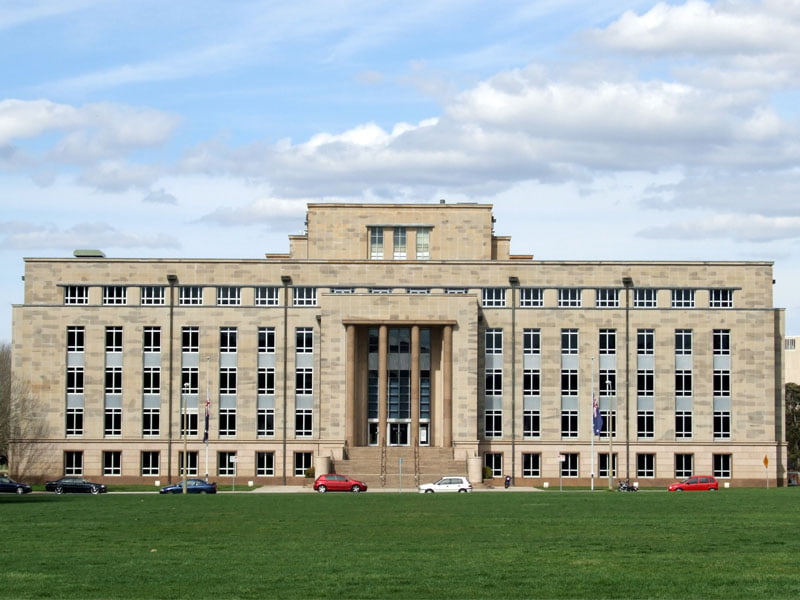“Stand down, fellow citizens. I have returned from the Digital Transformation Office with peace in our time. The Drupal wars have been averted.”
Content management systems are not exciting. But they do have an excellent track record for causing a massive stink when things go wrong, and when costs blow out.
This is especially true inside governments. The Australian Government is no exception. In fact, the Department of Communications’ $4 million website is now the stuff of legends.

DCITA (as the department was then known) had sought static site through a project conceived in late 1999 and budgeted at $600,000. Within a year costs had doubled, and by the time Senate Estimates was trawling through the project’s gizzards in 2003, the department had spent more than $4 million. On a static website.
And when it was finished, of course, it was terrible. It is fair to say that the DCITA website is probably not the former Communications Minister Richard Alston’s fondest memory of his time in the Senate. (Mr Alston is now Federal President of the Liberal Party.)
The full horror of that project, and its blood-on-the-walls aftermath, has passed into public service lore. The lesson it taught us is this: The web is a terrible and evil place when the project you spent lots of money on doesn’t work.
The hyper-angst about CMS inside government finds its roots in that project.
So here we are 15-years later, and government departments have been readying to go to war (again) over a CMS issue. Specifically, the issue relates to the Drupal-based GovCMS platform created, administered and marketed by the Department of Finance – and how that platform fits into the world according to the DTO.
Here’s the thing. The Department of Finance has spent the past 18 months strong-arming departments and agencies into using its GovCMS platform with the promise of an open source Promised Land somewhere down the track.
In the meantime, the Digital Transformation Office has been formulating its own go-to-market plans. It is only in the past week that the DTO has confirmed that the agencies that have already invested moving to GovCMS can remain in that environment.
While the DTO will build its own infrastructure – and had preferenced Drupal as its likely front-end into that system – it is understood to have been unhappy with the way Finance had constructed GovCMS. It was also concerned about the hooks that Finance’ technology partner Acquia had built into the platform might lead to a loss of control, and performance issues.
As a change agent, it is fair to say the DTO aims to control its own destiny and had been prepared to build from the ground up.
All this stuff is going on in the background. No-one understands it and no-one particularly cares. Except that EVERYONE remembers the DCITA website.
And so the 50-odd websites of departments and agencies who had signed up for GovCMS – which has proved to be far more expensive that originally advertised – were suddenly left wondering if they are going to be left stranded AGAIN, and be forced to invest further in moving to a new, DTO-approved CMS.
Well, no. The DTO has confirmed that its platform will co-exist with GovCMS. Effectively the two systems will run in parallel with Finance’s GovCMS operating like a staging environment (so that departments can still use it for editing, workflow and editorial control) while the DTO is the production environment.
The DTO says it is satisfied that the model it has chosen to move forward with will enable it to interact with the GovCMS platform without performance degradation or loss of control.
This is a story that should probably be filed under ‘No-one Cares.’ But everything about this compromise arrangement seems more of a political fix between agencies than anything. It’s not hugely important, I suppose, and at the end of the day it is a pragmatic decision.
But GovCMS has been such an awful project since its tortuously slow beginnings that it is worth noting its latest spat. Because this is a project that is unloved and in limbo.
Just as the great CMS disasters of yore, GovCMS has cost more than expected and delivered less than promised.
The selection process used to sign a controversial deal worth $24 million to US-based Drupal provider Acquia caused a firestorm. Finance simply mandated the use of Drupal without industry consultation, and refused to release the assessment document that helped it reach that decision until the industry started chucking rocks. (It turned out the assessment was two years old and based on an entirely different set of criteria).
The Department of Finance has promoted GovCMS as a whole-of-government CMS system. It is not. And it has promoted its US partner Acquia with the kind of zeal that would make a channel partner blush.
At some point you would have to wonder out loud why the Department of Finance has control of this GovCMS project at all. Because it makes no sense.
Perhaps if we could do it all again (Would we? Could we?), we would give the whole of the GovCMS remit to the Digital Transformation Office. This surely is the DTO’s cup of tea.
But if the DTO were offered to take all of the GovCMS-related infrastructure and people from Finance, I have no doubt they would run a mile.
Do you know more? Contact James Riley via Email.

